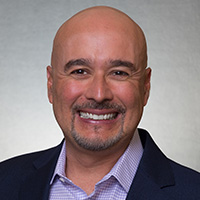Once slow to adopt new technologies, healthcare-related industries have been rapidly embracing digitalization to enable patient-centric care that is more effective for patients and safer for patients, healthcare professionals and researchers.
The digitalization of the healthcare
The Covid-19 pandemic has put this trend on overdrive, driving the adoption of connected health technologies that make a wide range of virtual care services possible. For example, the consulting company Mckinsey found that the usage of telehealth has grown 38 times if compared to the usage before the pandemic. Other features that exploded in popularity were the usage of AI-enabled chatbots such as symptom checkers and of remote patient monitoring.
The healthcare and life science industries embrace of digitalization has been all-encompassing. According to analyst firm IDC, 93% of pharmaceutical companies and 72% of biotech companies already have business-critical applications in the cloud, including product lifecycle management, analytics, revenue management, and much more.
At the other end of the spectrum, the proliferation of connected medical devices and the internet of medical things (IoMT) have dramatically accelerated. Today it is estimated that there are 10 to 15 million medical devices at U.S. hospitals with an impressive average of 10 to 15 connected medical devices per patient bed.
A pandemic of cyber attacks
While the digitalization of the healthcare and life sciences industry has led to better patient care, it has also made these industries potentially more vulnerable to attacks by cybercriminals.
2020 was also the year when “ransomware” became a household name around the world, especially by the frequent attacks on healthcare facilities and the dire effects on critical care. It is estimated the cost of US healthcare ransomware attacks alone at $21 billion in 2020.
But the threat is a lot more insidious. A survey of 230 healthcare security leaders in China, Germany, Japan, the UK, and the US found that a whopping 82% of their healthcare organizations had experienced an IoT-focused cyberattack.
The risks of non-compliance
The world of telemedicine, home health care, the IoMT, virtual clinical trials, and more have converged with SaaS, IaaS, PaaS, the cloud, big data, and AI to create advances for patients and health care and life sciences organizations alike.
But privacy regulations, such as HIPAA, GDPR, CCPA, and global standards such as ISO 27799:2016 on health informatics, raise the bar for healthcare and life sciences organizations, obligating the protection of sensitive personal data and levying substantial fines for not doing so.
This convergence has created major privacy and data protection vulnerabilities and place healthcare and life sciences organizations at risk.
How to protect healthcare data from a cyber attack pandemic
In our latest eBook How to protect healthcare and life-sciences data from a cyber-attack pandemic, we describe how Thales can help healthcare, pharmaceutical and biotech enterprises protect sensitive healthcare or intellectual property data. Read our eBook to learn how to continue to adopt innovations such as cloud, big data, AI, and IoMT while automating and streamlining data protection and simplifying compliance.

 Marcelo Delima | Senior Manager, Global Solutions Marketing
Marcelo Delima | Senior Manager, Global Solutions Marketing